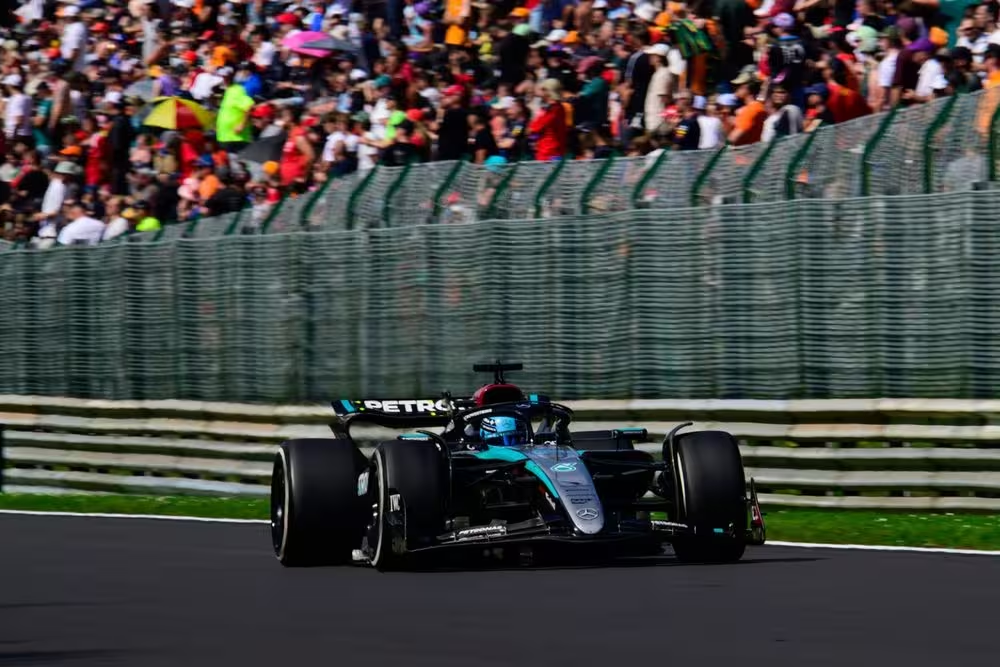A triple whammy of worst-case scenarios has emerged as the cause of George Russell’s car being underweight in Formula 1’s Belgian Grand Prix.
Russell was disqualified following his victory at Spa-Francorchamps last month after his Mercedes W15 was found to be 1.5 kilogrammes under the minimum weight limit in post-race scrutineering.
Mercedes had no immediate answer as to what had caused Russell’s car to be outside the regulations, especially considering that his and Lewis Hamilton’s car had been nearly identical – within 500 grammes – when weighed after qualifying.
Suspicions for the weight loss had initially revolved around the tyres, with Russell’s decision to run an unexpected one-stop race meaning his rubber was a lot more worn than Hamilton, who had pulled off a two-stopper so ended the race with fresher sets.
Speaking at the time, Pirelli’s head of F1 and car racing Mario Isola had explained that a single tyre could lose a pretty big chunk of mass over its lifetime.
“Usually…it should be around one kilogramme,” he said about the weight loss during a stint, with Russell only needing to lose 375kg per tyre to make up the missing 1.5 kilogramme.
Post-race analysis by Mercedes of what caused the problem has confirmed that Russell’s tyres were indeed lighter than Hamilton’s – but that did not actually offer the full explanation for the missing weight.
Instead, it is understood that key to the missing 1.5 kg was a combination of circumstances that caught Mercedes by surprise – with sources suggesting that it faced a worst-case scenario of weight loss in three critical areas.
George Russell, Mercedes W15
Photo by: Erik Junius
Beyond the mass loss due to tyre wear because of the extended stint, there was higher than anticipated plank wear – with Eau Rouge in particular punishing for the floors as cars compress at the bottom of the dip.
Furthermore, it is understood that Russell’s own weight loss through perspiration in the race, potentially triggered by the hot weather that day, also contributed to the circumstances – as car weight includes the drivers as well.
The issue of Russell’s own weight was something that Mercedes trackside engineering director Andrew Shovlin had hinted at in the days after the Spa race.
“The car can lose quite a lot of weight during the race,” he said in the regular Mercedes post-race analysis video.
“You get tyre wear, plank wear, brake wear, oil…
Click Here to Read the Full Original Article at Autosport.com – Formula 1 – Stories…

